A typical good quality Leman for the local trade. The cheek piece inlay
probably represents a quick trip to the custom shop. The rifle is in
excellent condition and perfectly useable with a freshed barrel. Typical
faux striping. The set trigger is single phase. There is no half cock
notch in the tumbler. The barrel is 35 1/2 in. long. 7/8 in. straight, .36
cal. The rounded tang is 2 1/4 in. long. The capbox is 5 3/4 in. long top
to bottom.The buttplate is cast steel. 4 1/4 in. high and 1 1/4 in. wide.
Note that the capbox cavity is not square at it's base but cut out with a
guoge with a rounded bottom.
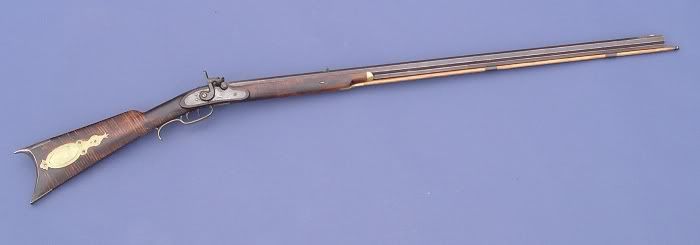
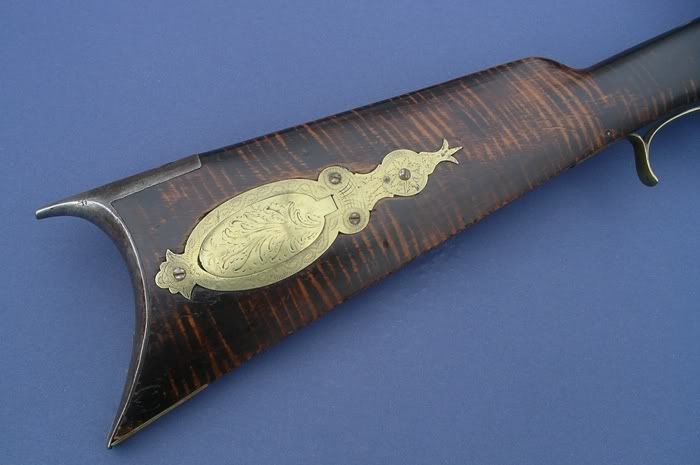
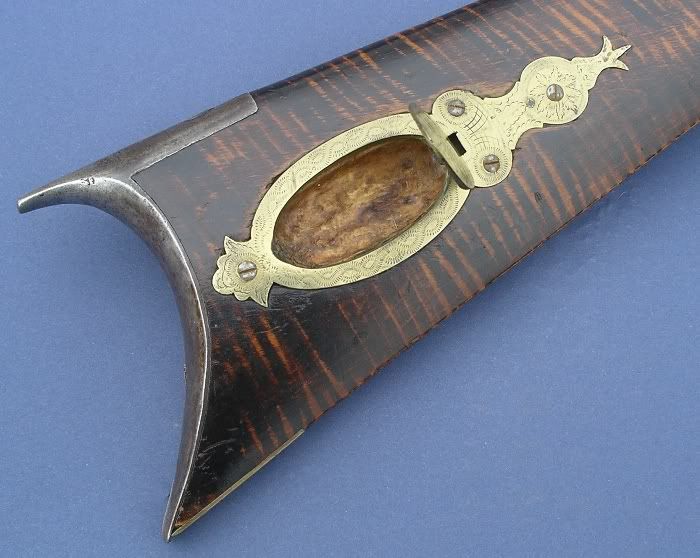
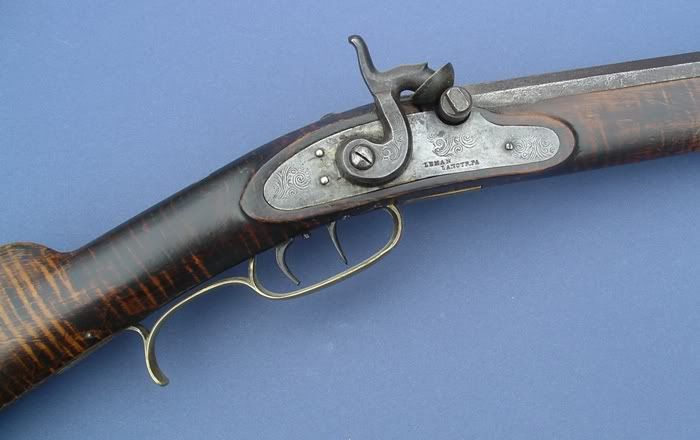
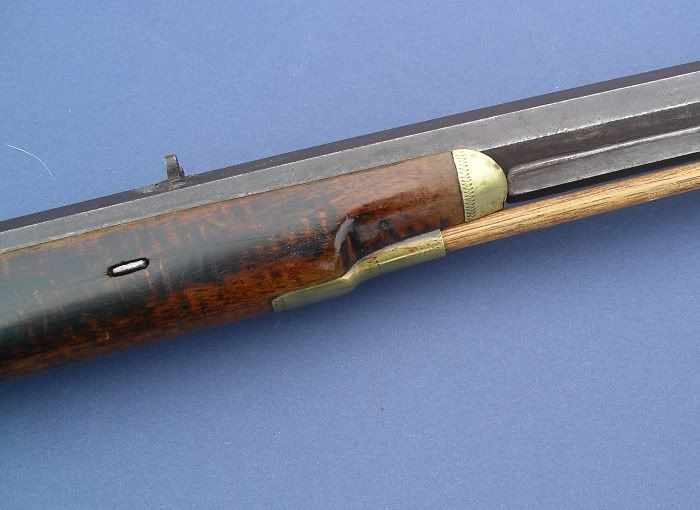
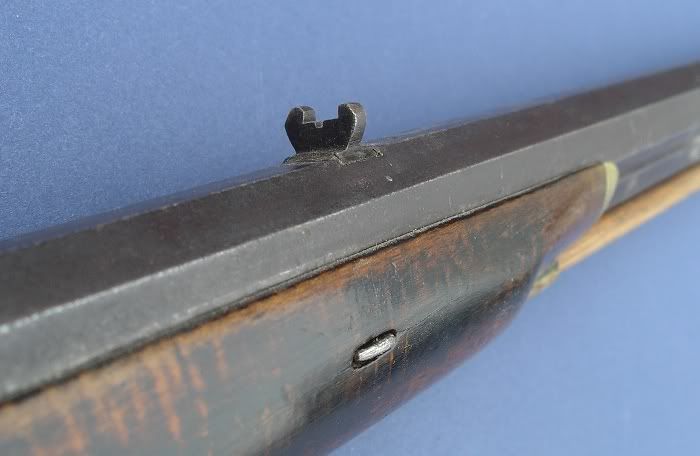
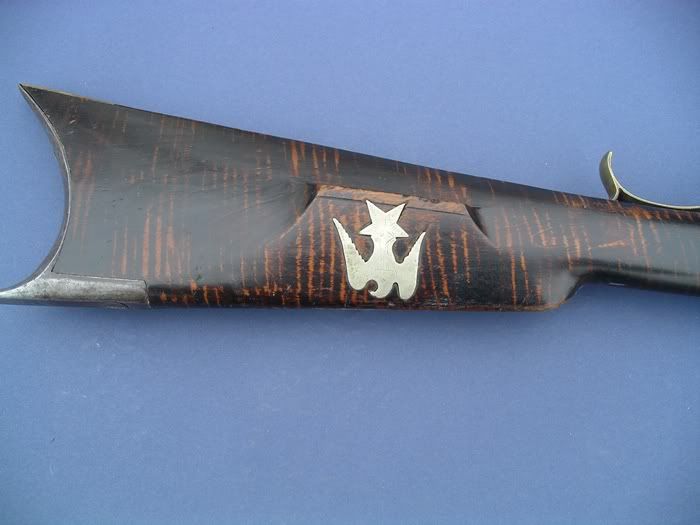
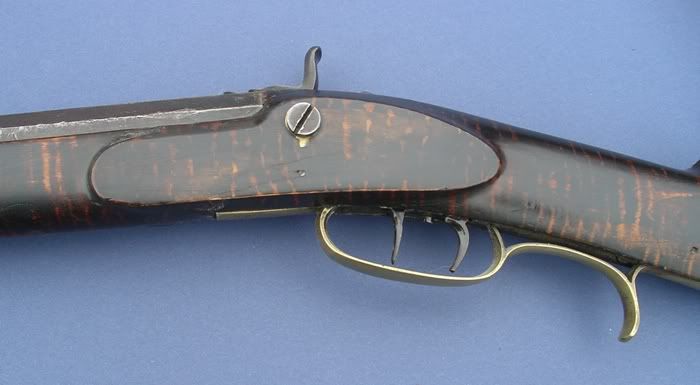
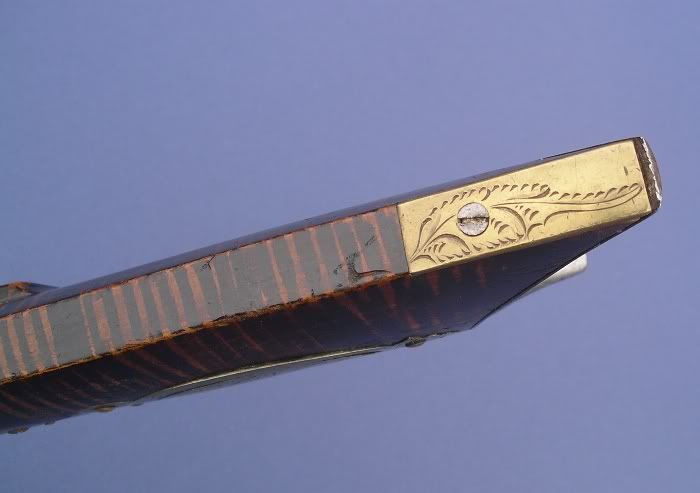
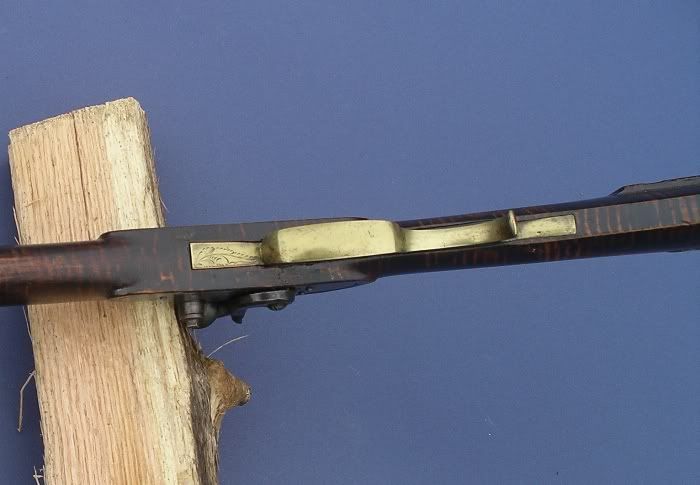
Comments:
This is a nice example of an important Lancaster, PA maker, and should be in the museum. Hopefully, we will get a few more Lemans in the future that show the full extent of his ability, even beyond these more commercial guns. This gun highlights his faux striping very nicely, is typical of his stock architecture, and has his trademark wiggle engraved borders. The cap box is one of the best I've seen on this level Leman gun, above average in its engraving, particularly on the finial. My only concern is the cheek inlay, which I believe was a later addition by the owner, and not done in the Leman shop. This last comment is based on handling a large number of Leman guns over the years, partly done while preparing an article on Leman for the KRA Newsletter years ago.
A fairly typical Leman rifle of the period, and a pretty nice one. I too, would say the eagle inlay on the cheekpiece was added later on by someone other than Leman.
Ask most people in Lancaster, PA about the 'Lancaster Rifle' and they bring up the suject of Leman guns. He was all important there in the 19th century and his manufactory produced a wide variety of completed guns and parts. His trade guns are part of the fabric of the early western movement.
This is a dandy little half stock with some nice features, such as the iron buttplate, the above average capbox, the engraving on most of the nonferrous metal and they fine condition.

